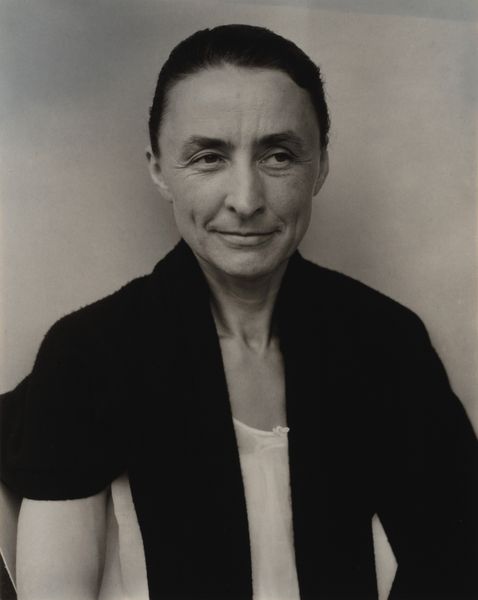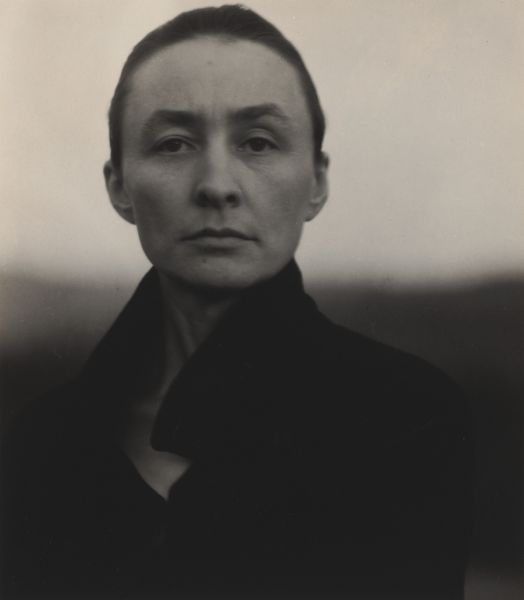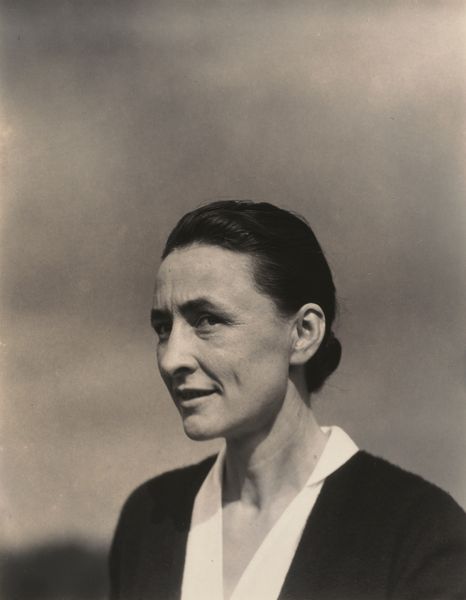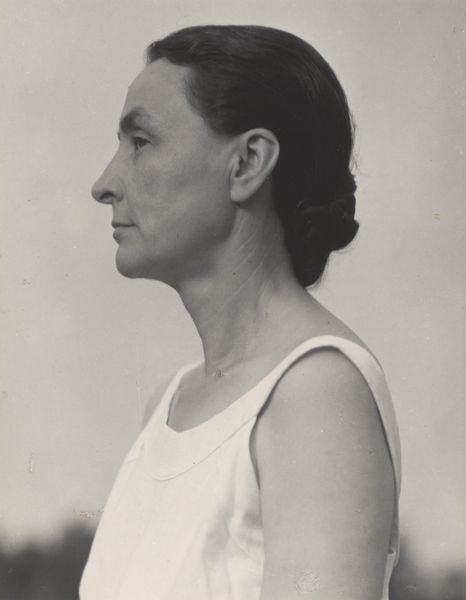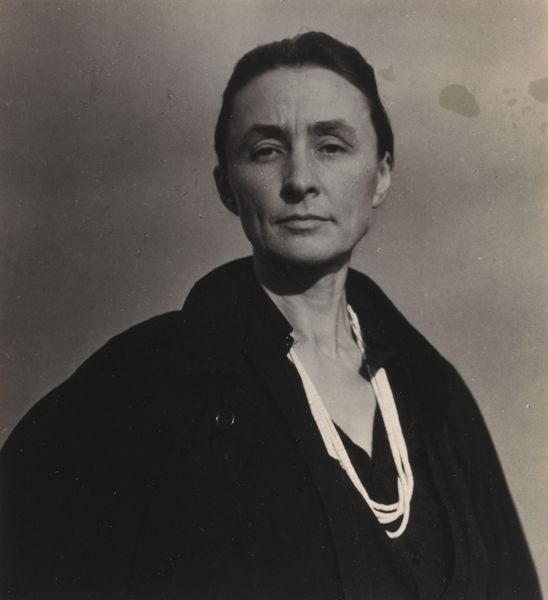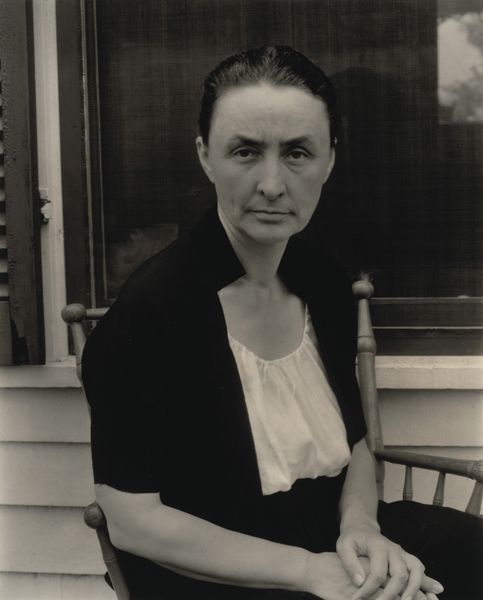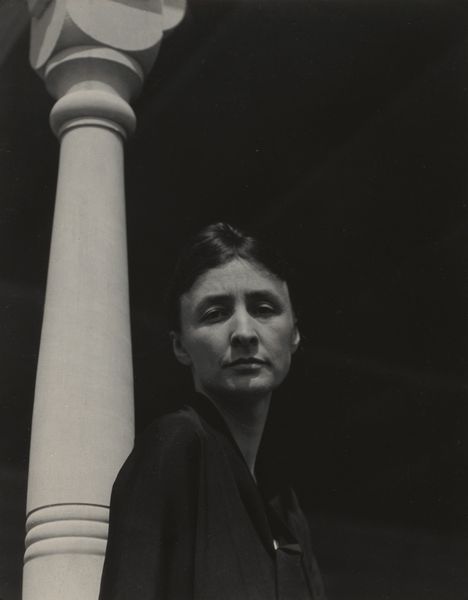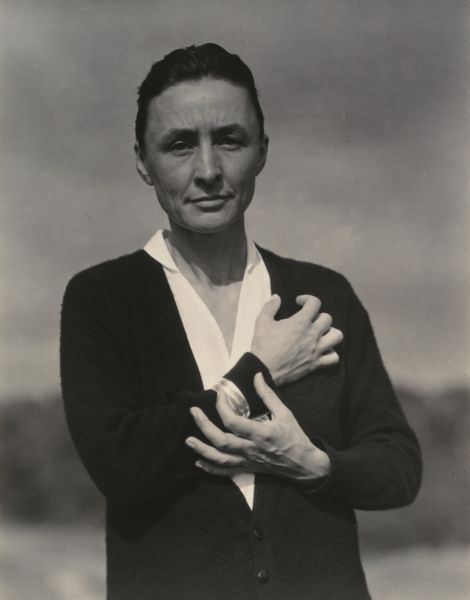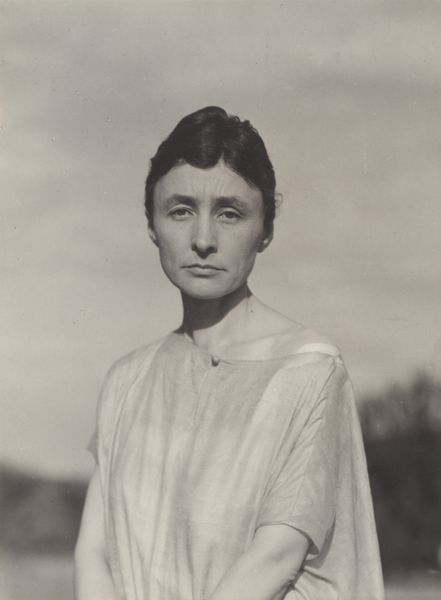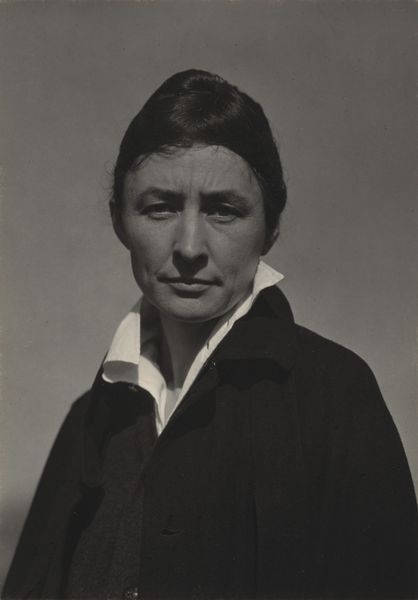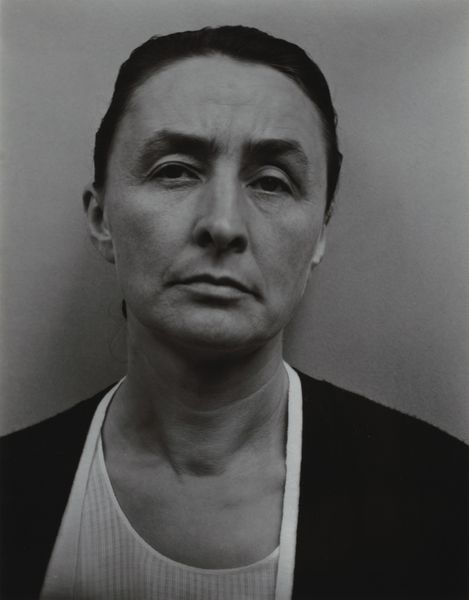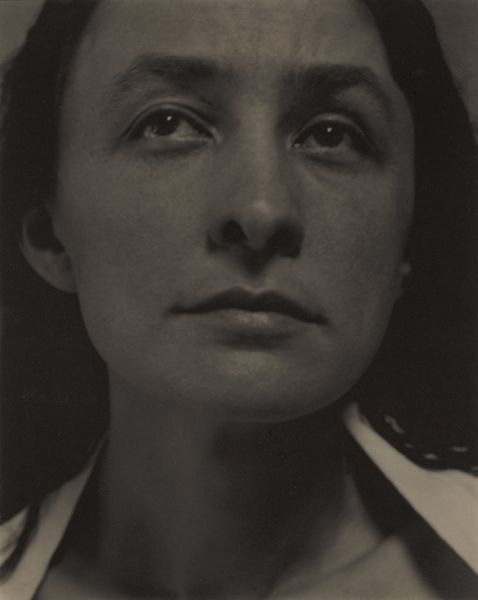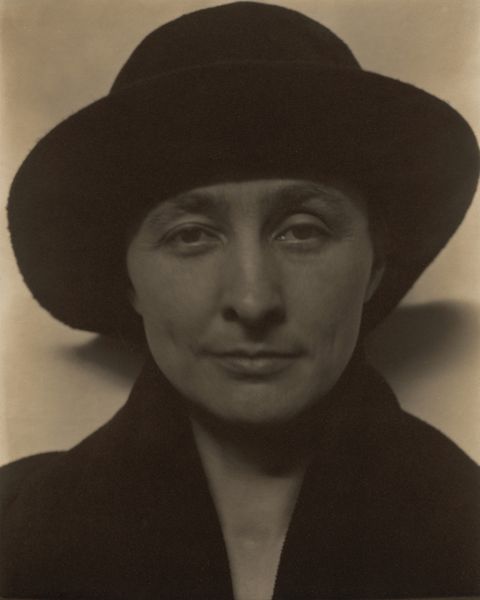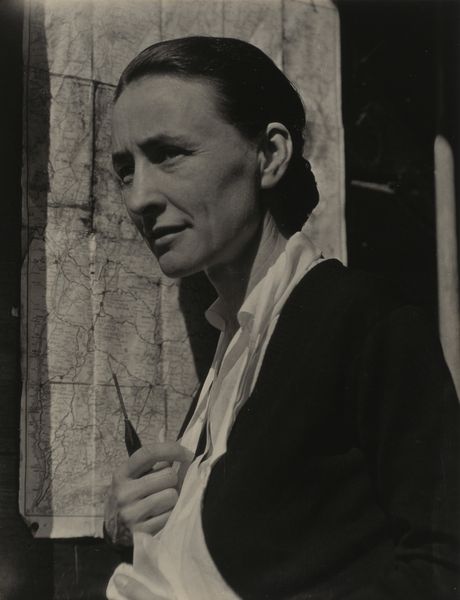
photography, gelatin-silver-print
#
portrait
#
black and white format
#
photography
#
black and white
#
single portrait
#
gelatin-silver-print
#
modernism
#
realism
Dimensions: sheet (trimmed to image): 11.7 × 9 cm (4 5/8 × 3 9/16 in.) mount: 34.8 x 27.5 cm (13 11/16 x 10 13/16 in.)
Copyright: National Gallery of Art: CC0 1.0
Editor: So, this is Alfred Stieglitz's "Georgia O'Keeffe" from 1929, a gelatin-silver print. It's a stark, almost confrontational portrait. What strikes me is how unglamorous it is; it feels like a deliberate choice to depict her without artifice. What are your thoughts? Curator: This image needs to be situated within Stieglitz's broader project, not just as a portrait of O'Keeffe, his wife and muse, but as a strategic act within the cultural politics of the time. How does this “unglamorous” portrayal of O’Keeffe resonate with the emerging modernist aesthetic and the challenging of established artistic norms? Editor: That's a great question. I guess it’s pushing against the conventional idea of feminine beauty often depicted in art at that time? Was Stieglitz intentionally building her image? Curator: Precisely. Consider the historical context. Stieglitz's work aimed to elevate photography to the level of fine art. By portraying O'Keeffe with such stark realism, what do you think he might have been communicating about the artistic possibilities of photography and its relationship to modern identity? This photograph contributes to the creation of O'Keeffe as a modernist icon. The question is how? Editor: It feels like he’s saying photography can capture truth, an unvarnished reality, in a way painting maybe couldn't or wouldn't. And maybe showing O'Keeffe as a strong, almost stoic figure was his way of challenging societal expectations of women and their representation. Curator: Exactly. Think about how museums and galleries validated and popularized those images. It shaped public perception, reinforcing this carefully crafted image of O'Keeffe as this independent, almost austere, artist. And that image, in turn, impacted how her art was received. How do you feel this tension between reality and staged image, considering this duality of O'Keeffe and her persona, resonates in her works, especially the paintings? Editor: That's fascinating. I never thought about how the portrait itself could be part of the art, creating the narrative *around* the artist’s paintings. Curator: And that’s exactly why understanding the history surrounding an artwork is as important as appreciating the artwork itself. The image is a product of the moment, reflecting both artistic intention and larger cultural forces.
Comments
No comments
Be the first to comment and join the conversation on the ultimate creative platform.
